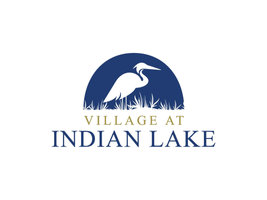Wildlife of Indian Lake
Hello, my name is Ella McCarty and I am a resident here at Indian Lake. For my Girl Scout Silver Award project, I decided to put together a research book about the wildlife and history of Indian Lake. Another part of my project was to build all new benches to be put near the lake. Below is my research of the wildlife of Indian Lake. I would like to thank Mr. Cordeiro for all his help and information. This project would have been much more difficult without him! A paper copy will soon be put in a shelf under one of the benches down by the lake. I hope you enjoy!
Birds:
Great Blue Heron 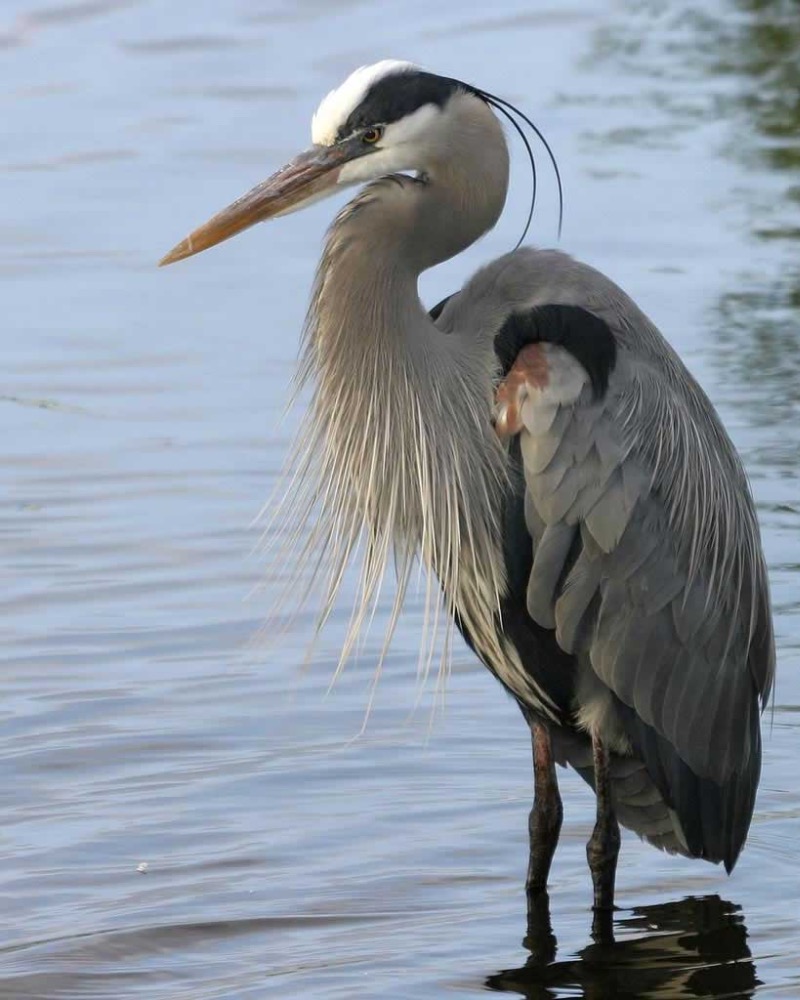
The Great Blue Heron can be found in wetlands and along the coast of the ocean. They stand still for long periods of time if they have their eyes on prey. Great Blue Heron are fast to snatch their prey from a distance, thanks to unusual shaped vertebrae. Their prey includes fish, insects, and even birds. Great Blue Heron are a gray-blue in color and have a wingspan of around 66-80 inches.
Great Egret 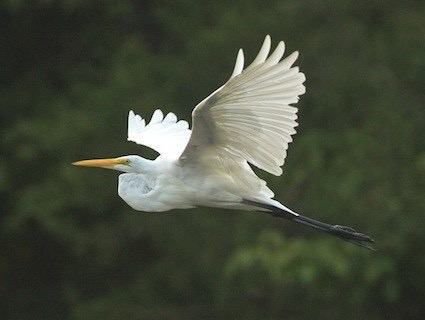
Great Egrets are common to see in the wetlands of North America. They can be found in shallow waters. Great Egrets are completely white, except their orange bills and black legs. They have long curved necks that they tuck in while in flight. Great Egrets are special because they can be found in fresh and saltwater. They have a clutch of 1-6 eggs, and the nest is built out of sticks.
Red-shouldered Hawk 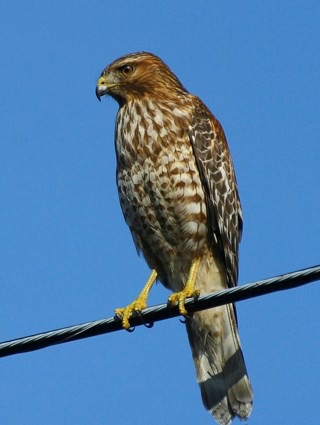
Red Shouldered Hawks perch high up on branches and stalk their prey. They eat reptiles, amphibians, and small mammals including mice. The Hawk’s distinct colorings are checkered wings and a red breast. The Red-shouldered Hawk is known for soaring in circles and perching while hunting.
American Robin 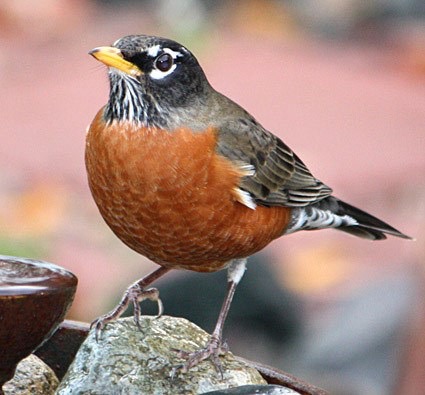
The American Robin a usual sight in most of North America. They are noticeable with a red-orange breast and have a joyful song. An American Robin’s diet includes of fruit and earthworms. Female robins choose horizontal branches to build their nests on. They have a clutch of 3 to 5 eggs up to 3 times a year.
Osprey 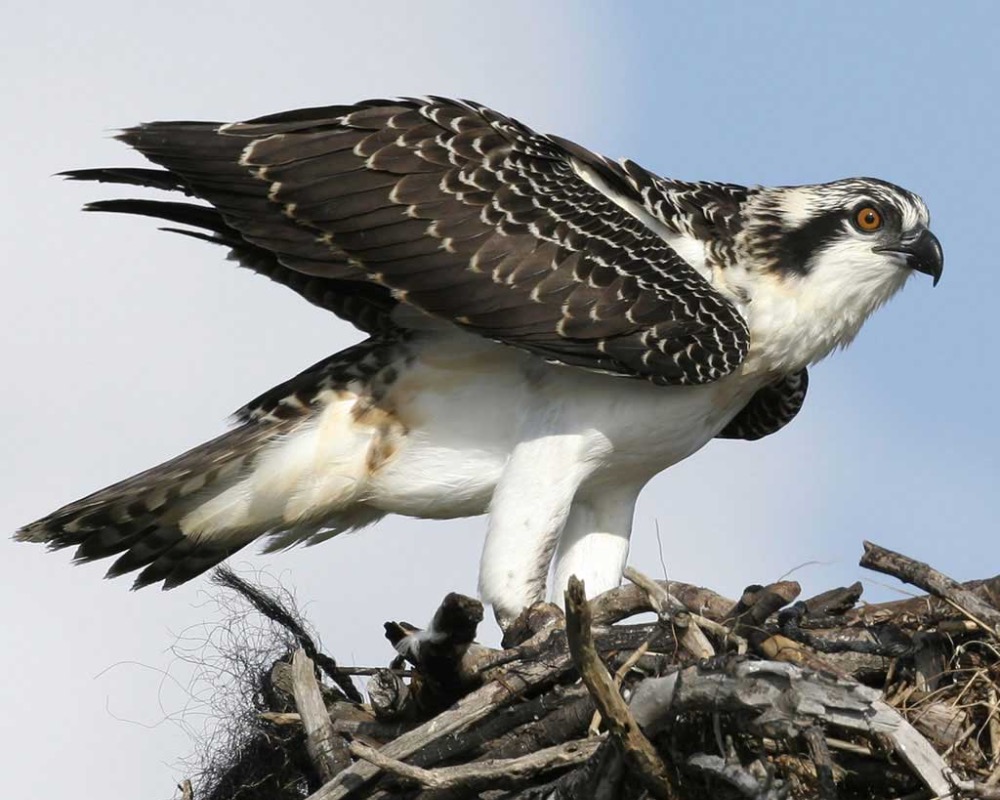
Osprey can be located near any water with a large amount of fish. They eat fish about 4 to 12 inches long. Osprey usually have 2 to 4 eggs at a time. Their eggs have brown splotches but are mostly creamy white. Osprey use their sharp talons to snatch their prey while flying above the water.
Canadian Geese 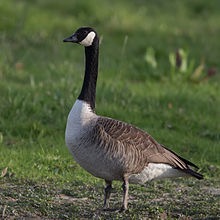
Canadian Geese have a tan colored breast, black head and neck, and white chinstrap. They eat seeds and berries in the Winter and Fall. In the Spring and Summer, Canadian Geese eat grass skunk cabbage leaves. They nest near water on the ground where the Female stays to incubate their eggs.
Barred Owl 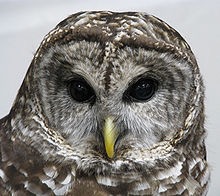
The Barred Owl is 40 to 63 centimeters in length and can have a wingspan reaching 125 centimeters. They can be found at the very top of a tree in dense foliage. The Barred Owl is usually gray and white but may be brownish. They have yellow beaks.
Little Brown Bat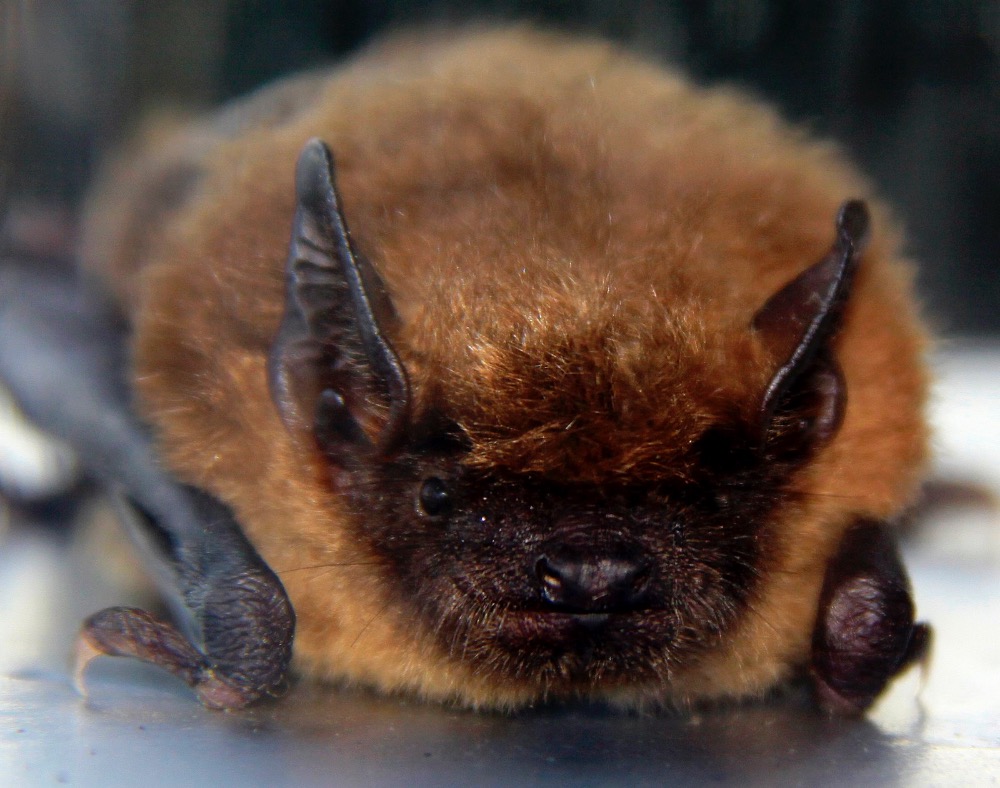
The little brown bat is very common in Rhode Island. They use echolocation to find insects to eat. Little brown bats have an average life span of six to seven years. They have a wingspan of 9 to 11 inches long. Little brown bats eat their weight in insects every night.
Wood Ducks 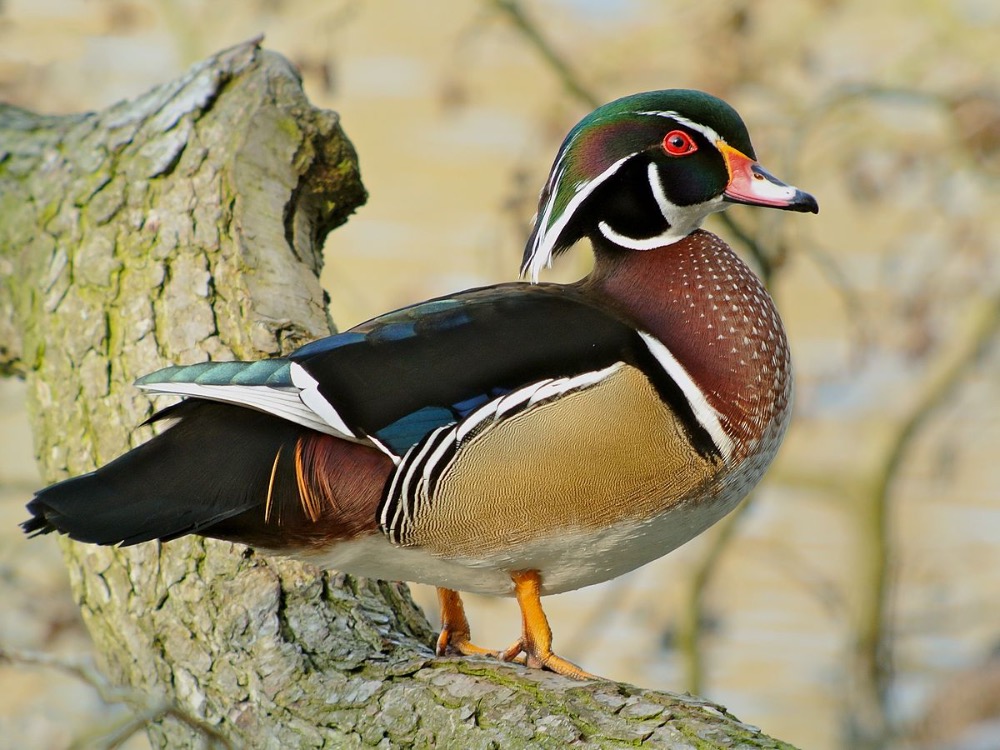
Wood ducks weighs around 1.5 pounds. While males have more elaborate colors like blue, green, and purple, female Wood Ducks are usually are white or brown. These animals were near extinct in the early 1900s. Now, their population has increased and become very common.
Mute Swans 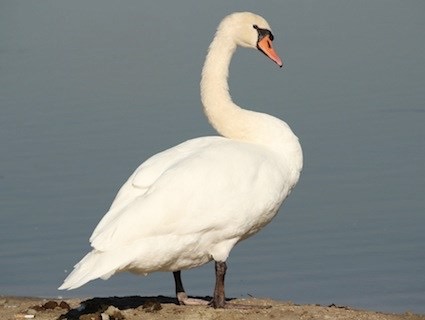
Mute Swans are very heavy (30 pounds). While the public has adopted the Swan as a symbol of peace, this is very incorrect. Swans are aggressive creatures and will do what they need to protect their young. Please avoid going around baby swans, just in case the mom is nearby. To protect your safety, keep a distance from all swans.
Wild Turkey 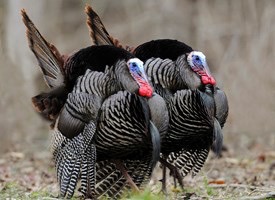
Turkey are large creatures. The only part about them that is small are their heads. Wild Turkey live in flocks and are almost never seen alone. They eat nuts, snails, and insects. When Wild Turkey feel that they are in danger, they will flee. Males will usually run, but females will fly.
Swallows 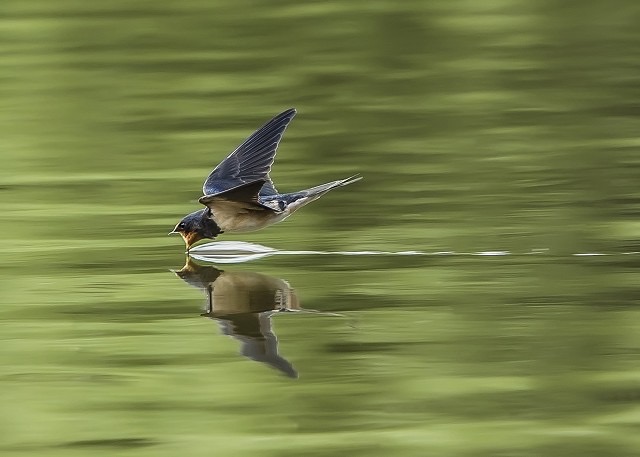
The Swallow is known for it’s unusual drinking behavior. When a Swallow needs a drink, they fly low above the water to get a sip. They like to make nests on barns, sheds, etc. According to livingwithbirds.com, “It takes a pair of Swallows up to 1,200 journeys to build a nest.”
Double-Crested Cormorant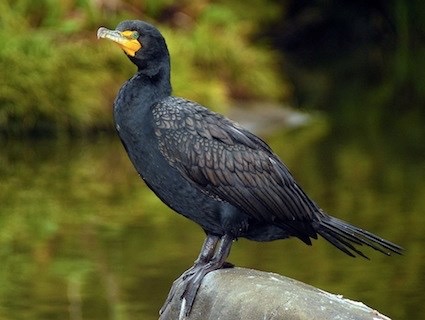
Double-Crested Cormorants have black bodies. Around their orange bill, they are a bit more colored. Adult Cormorants will have crest shaped colorings on the sides of their head. Unlike many birds, the Double-Crested Cormorant does not have waterproof feathers. This unusual trait for a bird helps the Cormorant have more weight to dive with.
Turkey Vultures 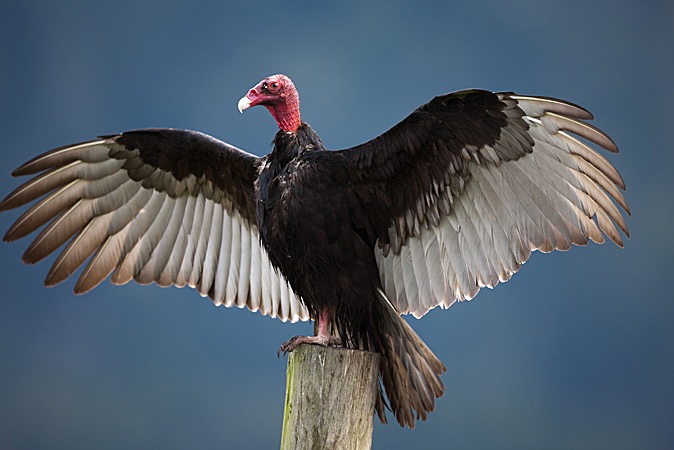
Flying in a V shape, these birds have great wings. Turkey Vultures are dark creatures, with a red head. Their superpower is finding carcasses on land. According to birdwatchersdigest.com, “One of the Turkey Vulture’s defenses is to puke on an intruder.” Please give these animals space, you don’t want to be puked on.
Black-Crowned Night Heron 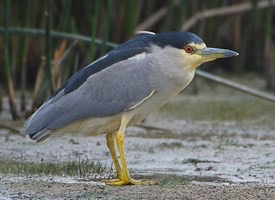
As implied by its name, the Black-Crowned Night Heron is seen at night. This type of Heron is different from its relatives because it is short and chubby. They nest in groups and perch on branches.
Snakes:Northern Water Snake
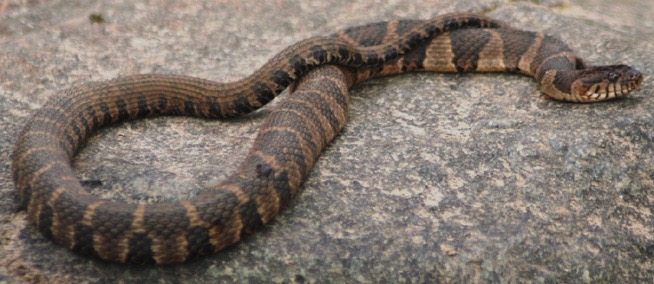
Northern Water Snakes have red-brown cross-bands close to their heads. They have thick bodies that are 24-42 inches long. Northern Water Snakes can be found around the edges of the water in the wetlands. They eat fish, tadpoles, small mammals, insects, frogs, and birds. Northern Water Snakes are territorial animals, and will first retreat to the water if confronted.
Black Racer Snakes 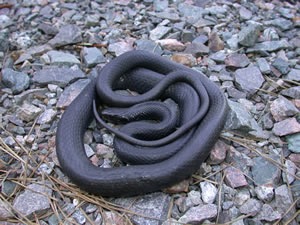
Black racer snakes are usually 5 to 6 feet long and eats insects and small mammals. When these snakes feel threatened, they may shake or vibrate their tails. If you come across a snake that is vibrating it’s tail, be sure to know that it is not a rattlesnake. There are no venomous snakes in Rhode Island.
Turtles:
Eastern Snapping Turtle 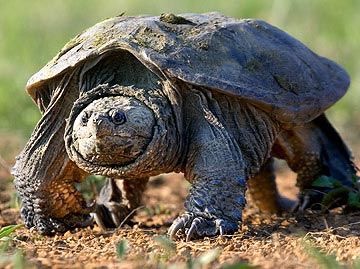
Eastern Snapping Turtles very large and can be as long as 20 inches in length. They have a weirdly saw shaped tail. One Snapping Turtle in our lake is commonly seen by the fish ladder and hides under the dock. They usually lay one to two clutches per year. After about two months of incubation the turtle eggs will hatch.
Eastern Painted Turtle 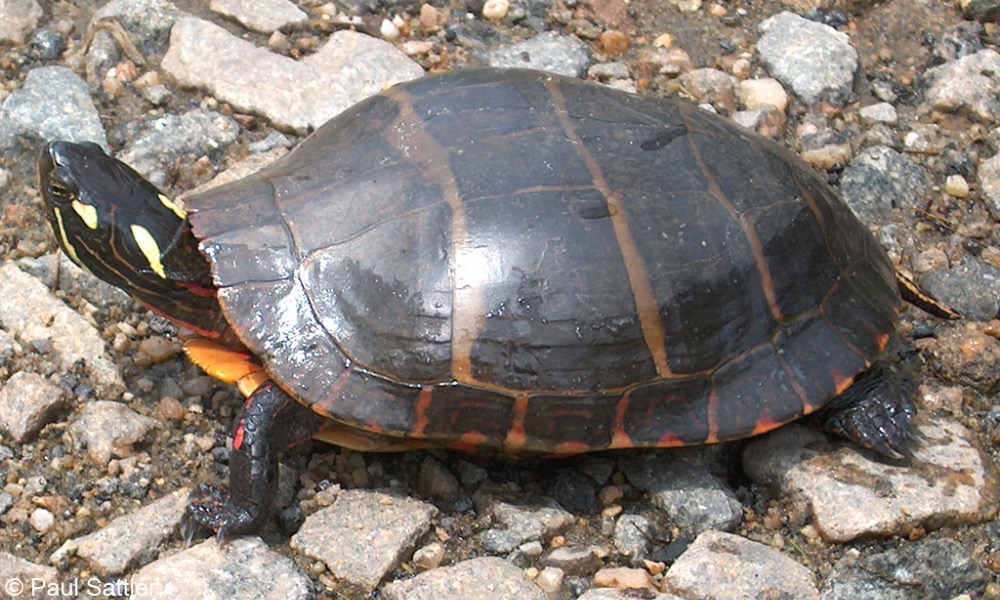
The Eastern Painted Turtle is smaller than the Snapping Turtle, being only 4 to 9 inches long. They have dark colored shells with red around the outside. Eastern Painted Turtles have yellow stripes on their tails. Males have long thick claws, while females have shorter and thinner claws. These animals can be seen sunbathing on rocks.
Eastern Box Turtle 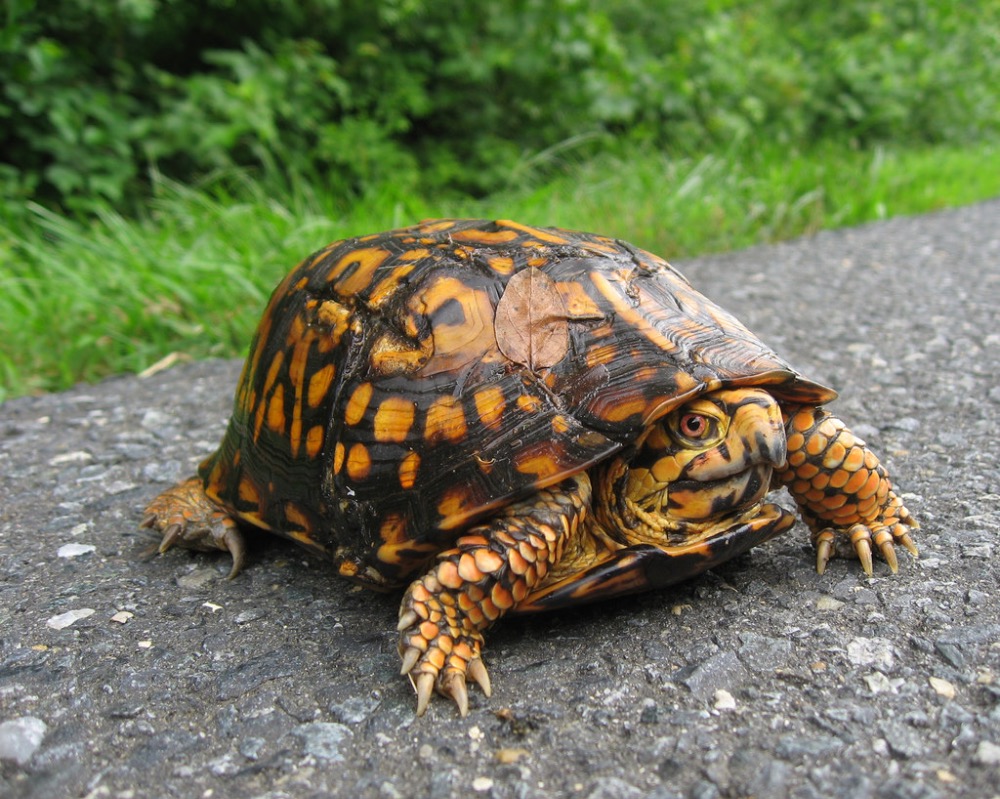
Eastern Box turtles are known for their oddly shaped shells. Their shells are usually dark with yellow spots. Female and male Eastern Box turtles are very similar sizes. A normal turtle ranges from 4.5 to 6 inches.
Mammals:Raccoons 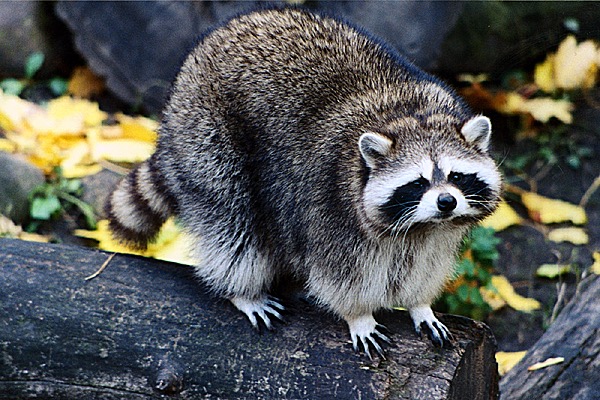
Raccoons have striped tails that range from 8-12 inches long. Their tails are striped black and white, while their bodies are light brown. Raccoons have black markings that cover around their eyes. They are mainly nocturnal, but can be active during the day. Raccoons weigh 12-35 pounds. They eat berries, insects, and bird eggs. Raccoons usually only live 10 to 12 years.
Eastern Gray Squirrels 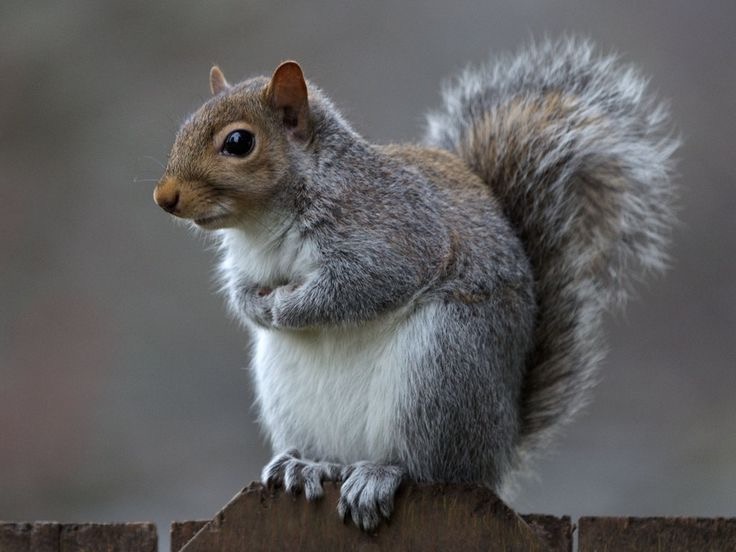
Eastern Gray Squirrels spend most of their time in trees but spend a noticeable time on ground as well. They are usually gray, black, or brown. These small mammals only range from 1 to 1.5 pounds. Eastern Gray Squirrels have tails are half of their whole length. The squirrels are the most popular species of squirrel found in Rhode Island.
White Tailed Deer 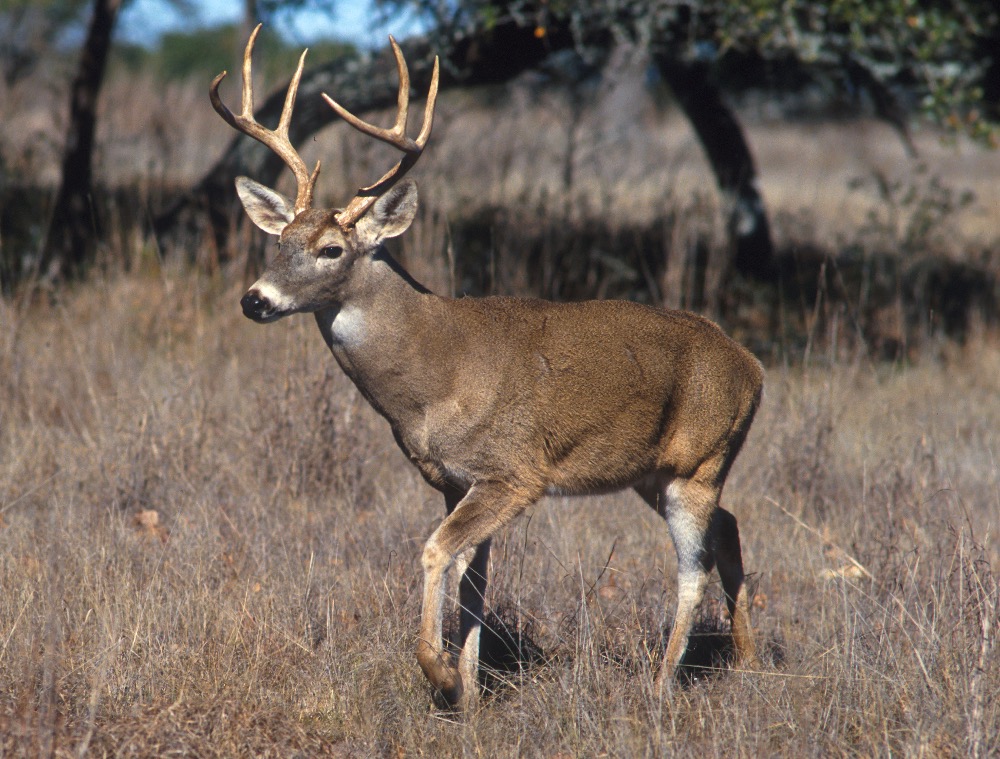
White Tailed Deer are herbivores. Deers enjoy eating the buds of flowers in the spring. The population of these animals changes quickly due to Coyotes. White Tailed Deer are known for jumping and running at speeds of around 30 mph. Their usual colors are brown, tan, and gray.
The Eastern Coyote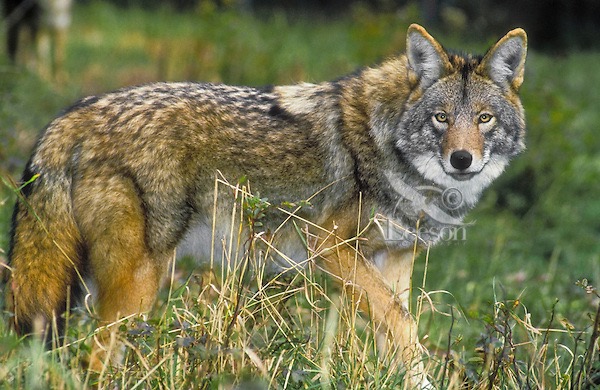
This kind of coyote eats fruits, berries, birds (and other small mammals), and garbage. To avoid trouble with this mammal, leave no trash outside, do not feed them, and keep small pets inside. Male Eastern Coyotes can reach 50 pounds but females will only reach 40 pounds at most.
Fishers 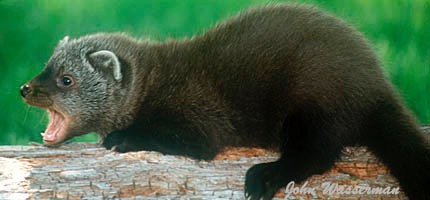
Many people call Fishers “Fisher Cats” but these animals are not a part of the cat family. Fishers belong to the weasel family and are carnivores. They will eat reptiles, mice, raccoons, rabbits, and squirrels. They may eat HOUSE CATS!! Many Fishers eat dead fish along the shore of lakes and other bodies of water.
Red Foxes
Foxes are a part of the dog family. They are mostly red-orange but have black legs with white fur at the end of their tails. Red foxes are most active at dusk and dawn. Foxes usually have a litter of 3 to 5 pups.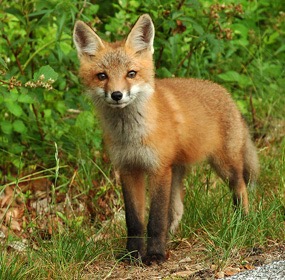
Gray Foxes
Gray foxes are gray with a tan and yellow underbody. They have a black tipped tail. Gray foxes have been sighted around lakes and rivers. They eat bird eggs, birds, and fruit. (For more general Fox information look above at Red foxes).
Striped Skunks 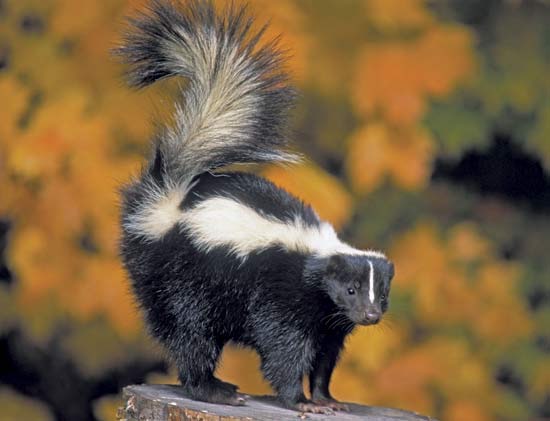
The Striped Skunk is known for its bushy tail and are three to twelve pounds. They are nocturnal animals. Striped Skunks make burrows for homes and are mostly inactive in the winter.
Fish:
River Herring 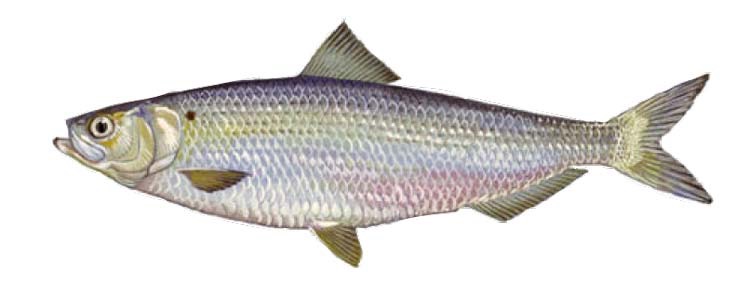
River Herring are anadromous fish, which means that they spawn in freshwater and their young go to the ocean for three years before returning to Indian Lake. The Herring go up through the fish ladder below the bridge. In our lake, Herring feed Bass and other similar predators.
Sunfish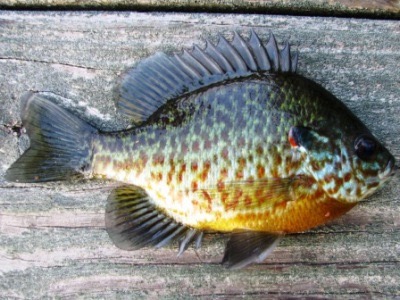
Also known as the Pumpkinseed fish, Sunfish have a green body, yellow fins, and have orange spots. They swim near the shore line and hang out under the dock. Sunfish are known for having beautiful designs.
White Bass
White Bass are silver or white with black markings. They are also known as White Lightning. The White Bass can easily be distinguished from its relative, the Striped Bass because of it’s smaller size.
Northern Pike 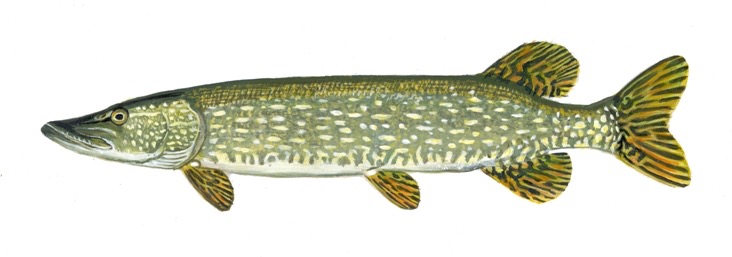
Northern Pike are predatory fish and have only one dorsal fin. They have oddly flat mouths. Their main colors are yellow and greenish-brown. Northern Pike do not have a specific diet, feeding on many other fish and insects.
American Eels 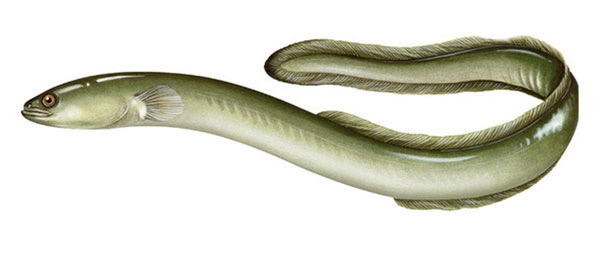
American eels are anadromous like Herring are. They spawn in the Atlantic Ocean before coming to Indian Lake. American Eels can be seen in the fish ladder. The longest these animals can be are 6 feet, and even that’s rare.
Amphibians
American Toad 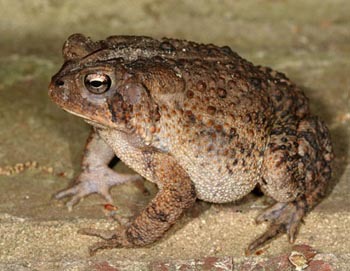
The American toad is a medium toad. They have raised round spots on their brownish-red body. American toads live in damp habitats with many insects. They are nocturnal and hibernate when the weather is cold.
American Bullfrog
The American Bullfrog dominates all other frogs in the United States with its incredible size. Some can grow up to 8 inches long. These frogs tend to be brown or green. Male American Bullfrogs are more territorial than females.
Yellow Spotted Salamander 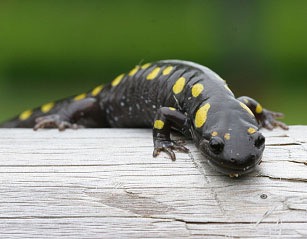
These salamanders look exactly how they sound. Yellow spotted salamanders have really dark bodies with yellow spots on their backs. They breed from winter into spring. Female salamanders can lay up to 200 eggs! A spotted salamander’s body ranges from 6 to 9.5 inches in length.
Sources
- Allaboutbirds.org
- Audubon.org
- larkwire.com
- Ehow.com
- Dem.ri.gov
- owlpages.com
- www.dupageforest.com, www.dpughphoto.com
- Cdn.c.photoshelter.com
- http://www.massaudubon.org/learn/nature-wildlife/mammals/fishers/about
- http://cdn.c.photoshelter.com/img-get/I0000cjDjARHI8tc/s/600/600/TK116141.jpg
- https://upload.wikimedia.org/wikipedia/commons/thumb/5/55/Barred_Owl.jpg/220px-Barred_Owl.jpg
- http://1.bp.blogspot.com/-nt9wy1gUegk/T5cMhCJ-RII/AAAAAAAAFX0/xho01YpQ8xE/s1600/fisher+cat.jpg
- http://wildlifehelp.org/animals/rhode-island/fox
- https://www.nps.gov/neri/learn/nature/images/web_Red_Fox_Hartley_square.jpg
- www.turtlerescueleague.com
- https://avsnca.files.wordpress.com
- https://media1.britannica.com/eb-media/43/95243-004-6C30D455.jpg
- http://srelherp.uga.edu/snakes/pics/colcon3.jpg
- https://bf1-farm6.staticflickr.com/5735/21739343223_d2ab1938b6_b.jpg
- http://www.rifishfinder.com
- http://americaneel.org/wp-content/uploads/2014/06/american-eel-drawing.jpg
- http://dnr.wi.gov/topic/fishing/images/species/northernpike1.jpg
- http://www.theanimalfiles.com/images/american_toad.jpg
- www.nationalgeographic.com
- http://www.nhptv.org
- http://srelherp.uga.edu/salamanders/ambmac.htm
- http://animalfactguide.com/wp-content/uploads/2013/01/spottedsalamander.jpg
- https://upload.wikimedia.org/wikipedia/commons/b/b7/White-tailed_deer.jpg
- https://csrspreadscience.files.wordpress.com/2013/11/bats2.jpg
- https://www.nwf.org/Wildlife/Wildlife-Library/Mammals/Bats/Little-Brown-Bat.aspx
- https://c1.staticflickr.com/4/3381/3217751131_a844ba7967_b.jpg
- https://www.allaboutbirds.org/guide/PHOTO/LARGE/mutswan_frahjh.jpg
- https://www.livingwithbirds.com/tweetapedia/21-facts-on-swallow
- http://www.birdguides.com/media/large/00409000/00409895.jpg
- http://www.edc.uri.edu/restoration/html/gallery/birds/cor.htm
- https://www.birdwatchersdigest.com/bwdsite/learn/identification/diurnal-daytime-raptors/turkey-vulture.php
- http://www.boulderaudubon.org/wp-content/uploads/2015/04/turkeyvulture1.jpg
- https://upload.wikimedia.org/wikipedia/commons/thumb/d/d3/Wood_Duck_%28Aix_sponsa%29%2C_Parc_du_Rouge-Cloître%2C_Brussels.jpg/1200px-Wood_Duck_%28Aix_sponsa%29%2C_Parc_du_Rouge-Cloître%2C_Brussels.jpg
Pages
- Home
- Welcome Letter
- Official VAIL News
- Directories
- Pet Directory
- Board Members
- Resident Tools
- Clubhouse
- Communications
- Dam/Storage Area Registration
- Storage area assignments for 2024
- Documents
- Proxy Form
- VAIL Governing Documents
- Water Test Results
- 2023 Document and Notices
- Septic Service Schedule - Master
- 2023 Septic schedule v10.6.23 final
- USDA - NRCS and FSA documents
- USDA
- Facilities
- Photo Gallery
- VAIL Board Tools
- VAIL Facilities information
- Board Links
- RI wetland regulations
- USDA - NRCS 2023-2024
- Insurance Policies
- Grandscapes COI 2024
- Silverleaf COI 2024
- Board Meeting Minutes
- Resale/HOA Certificates
- Indian Lake Info
- History Of Indian Lake
- Wildlife of Indian Lake

